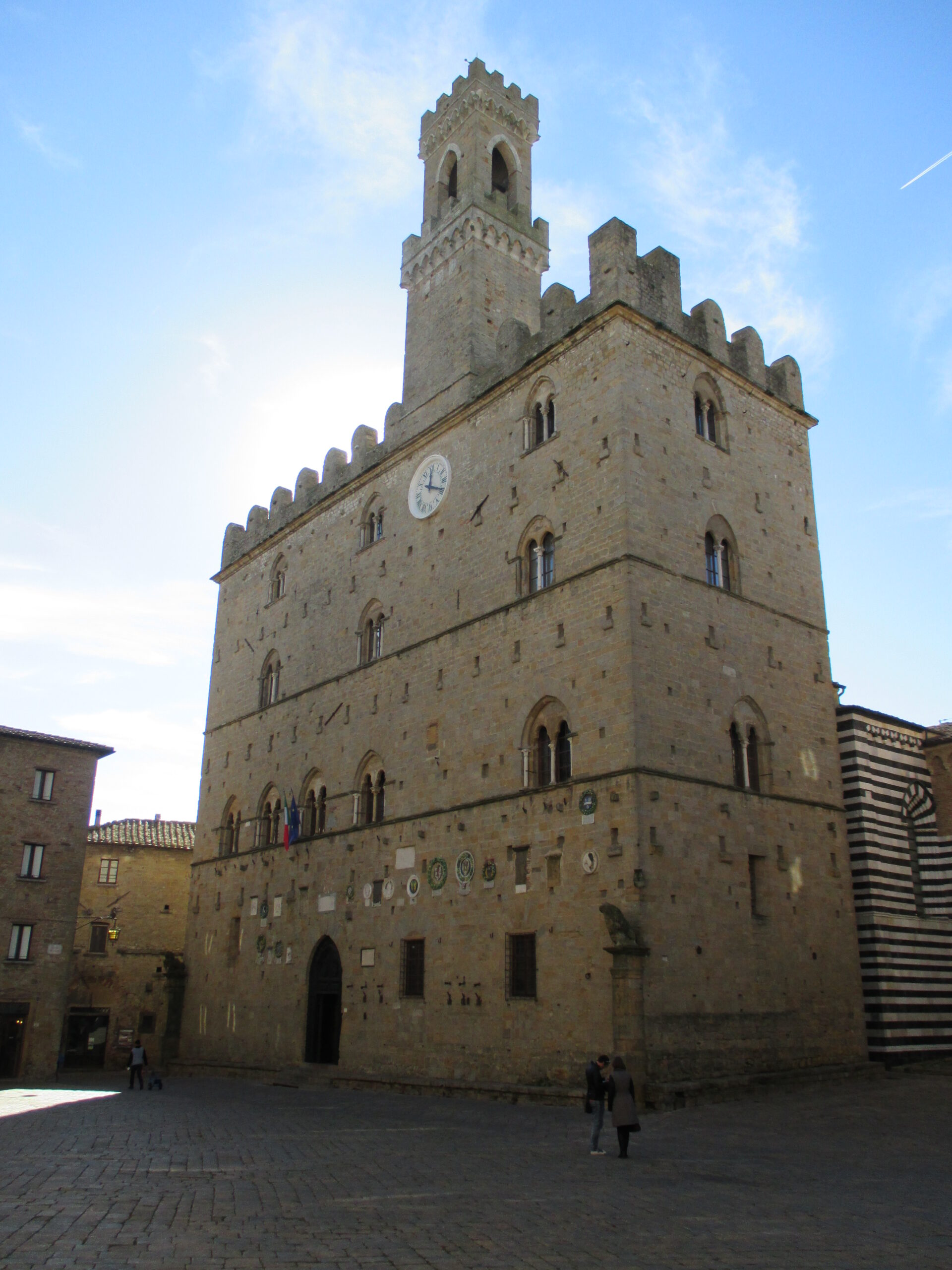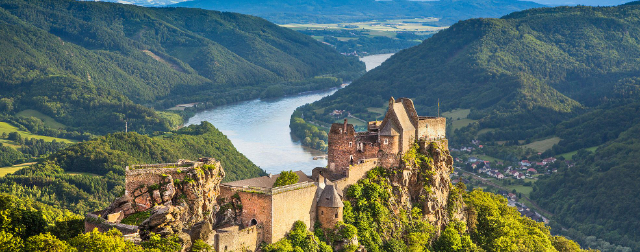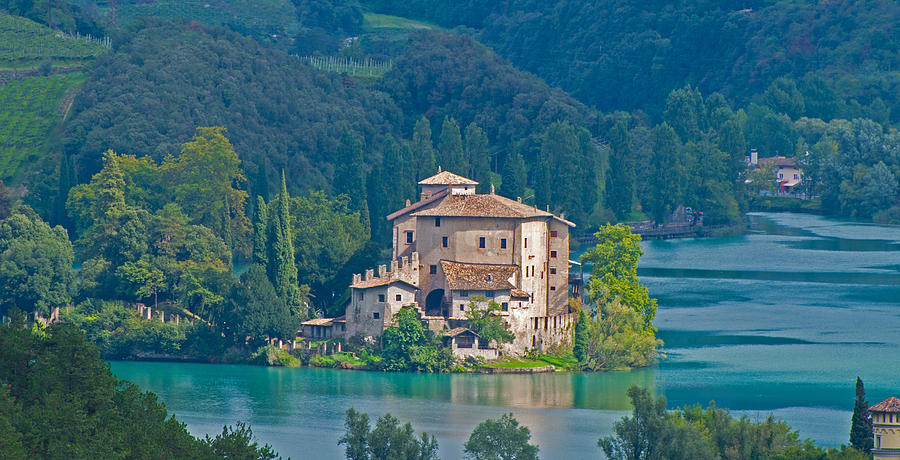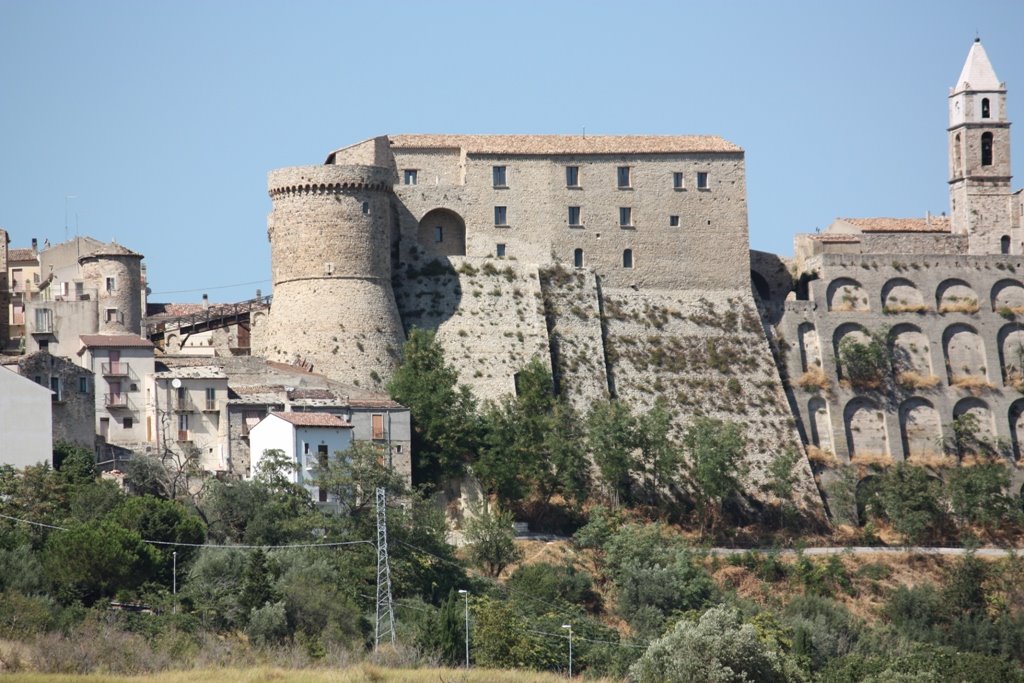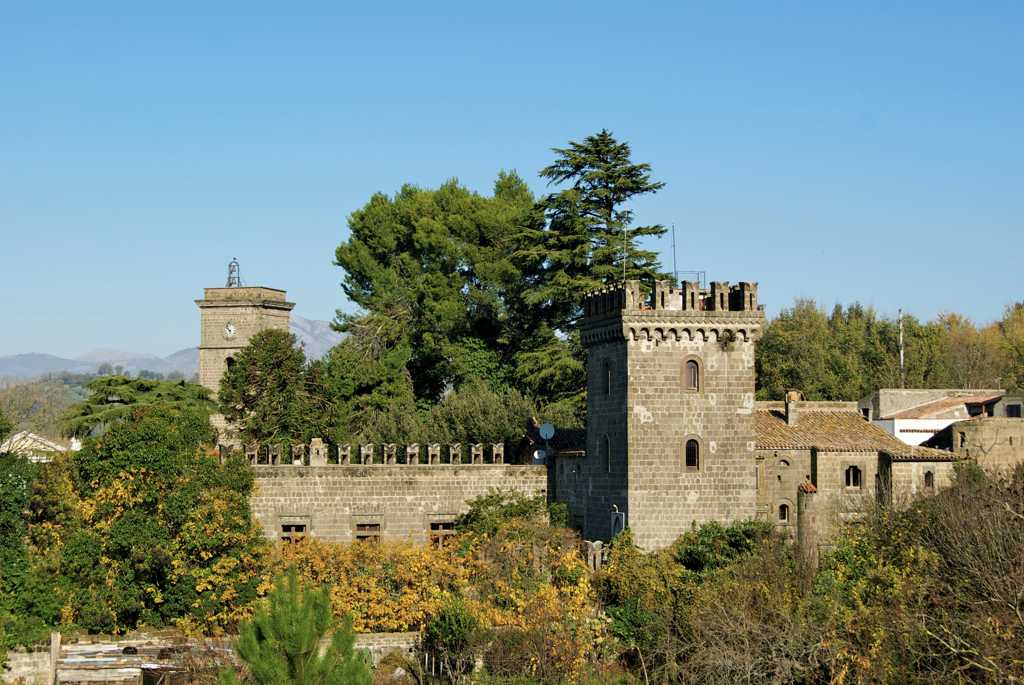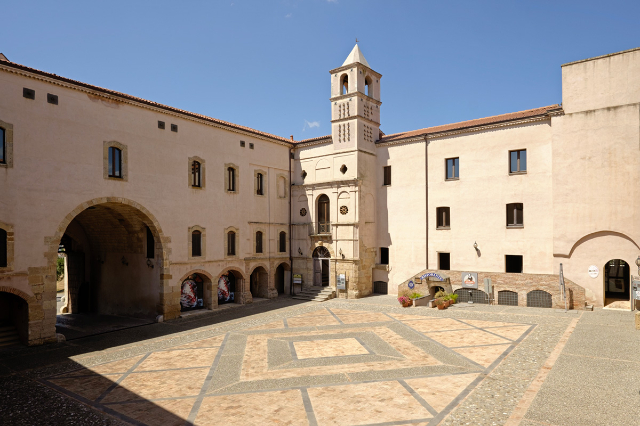Built by Master Richard in 1239 as the inscription near the entrance portal states, it has the shape of a parallelopiped. The façade, traversed by three rows of mullioned windows between the torch-bearers and banner-bearers between which is inserted the municipality’s unit of measure, the Volterran reed, is adorned with the Della Robbia crests of Florentine magistrates of the 15th-16th centuries. On either side, the two pillars surmounted by the two marzocchi supporting the Florentine shield were added in 1472, when the palace became the seat of the captain of justice, to symbolize Florentine rule over the city. The palace is topped by a pentagonal tower, which after the 1846 earthquake was given its present crowning by architect Mazzei, who made other interventions in the buildings facing the square.
The interior, decorated with the coats of arms of Florentine captains, contains a Crucifixion and Saints, a fresco by Pier Francesco Fiorentino, who also painted the other Crucifixion in the mayor’s antechamber, while the Virgin and Child is attributed to Raffaellino del Garbo. In the hall of the Great Council, decorated with inscriptions and coats of arms in the 19th century, the fresco reported on canvas of the Annunciation between Saints Cosmas and Damian and Saint Justus and Octavian by Jacopo di Cione and Nicolò di Pietro Gerini stands out. In the right side lunette canvas depicting the Marriage at Cana by Donato Mascagni, 16th cent. In the adjoining room known as the Sala della Giunta: panel depicting Persio Flacco by Cosimo Daddi, a monochrome fresco brought back on canvas depicting St. Jerome, two small canvases depicting Adoration of the Magi by Giandomenico Ferretti (18th cent.) and Birth of the Virgin by Ignazio Hugford, a canvas depicting Job by Donato Mascagni. In the counterwall: sinopia of the existing Annunciation fresco in the Council Chamber: around it, finely inlaid wooden posterns from the 15th century from Monte Pio.
